Scientific Name:
1- Datura stramonium L.
2- Datura metel L.
Synonym:
1- Datura tatula L.
2- Datura alba Rumph. ex Nees, Datura fastuosa L.
English Names (UK, USA, Canada, South Africa, Australia, New Zealand):
1- Common Thorn Apple, Jimsonweed, Datura Seeds
2- Devil’s Trumpet, Metel
Family: Solanaceae
GENERAL DATA
Plant Parts: Stems, Leaves, Flowers, Seeds, and Seed oil
Cultivation Mode: Wild collection/Cultivated
In Manufacturing: Pharmaceutical
🌿 Industries That Use Datura Seeds (Datura stramonium L.)
⚠️ Important Disclaimer
Datura seeds—and all parts of the Datura plant—are highly toxic. They contain potent tropane alkaloids (e.g., scopolamine, hyoscyamine, atropine) and are not used in food or casual herbal applications. Their use is highly restricted, monitored, or banned in many countries.
Despite their toxicity, Datura seeds have limited and specialized uses in pharmaceutical, ethnobotanical, and ritualistic contexts.
1. Pharmaceutical & Alkaloid Extraction Industry
Datura seeds are processed industrially to extract tropane alkaloids, used in prescription drugs.
Applications:
-
Scopolamine production: for motion sickness, nausea, and preoperative sedation
-
Atropine synthesis: used in ophthalmology and as an antidote for poisoning
-
Hyoscyamine: antispasmodic for GI disorders
✅ These alkaloids are used only under strict pharmaceutical standards.
2. Ethnobotanical & Traditional Medicine (Historical/Restricted)
In some traditional systems, especially Ayurvedic, Persian, and Native American medicine, Datura seeds were used with great caution in rituals and topical applications.
Historic uses:
-
As a sedative, pain reliever, or hallucinogen
-
Applied externally for rheumatism, neuralgia, or asthma (in smoke form)
⚠️ Modern medical use forbids self-medication due to the extreme toxicity of uncontrolled doses.
3. Spiritual & Ritual Use
In ancient cultures, particularly in South Asia, Mesoamerica, and Iran, Datura seeds were used in shamanic ceremonies and mystical practices.
Examples:
-
Inducing altered states of consciousness
-
Divination or visionary rituals
-
Included in incense or talismans for spiritual protection
✅ Today, such uses persist in ethnographic or anthropological study, not as public practice.
4. Scientific Research & Toxicology
Datura seeds are used in pharmacological research, toxicology testing, and studies on alkaloid metabolism.
Research areas:
-
Toxic dose thresholds and antidote development
-
Behavioral and neurological effects
-
Comparative phytochemistry with other Solanaceae plants
✅ Summary of Key Applications
| Industry | Common Uses |
|---|---|
| Pharmaceutical | Alkaloid extraction: atropine, scopolamine, hyoscyamine |
| Ethnobotanical & Ritual | Historical use in traditional medicine and sacred rites |
| Scientific Research | Toxicology, neuropharmacology, alkaloid analysis |
| Not used in: | Food, supplements, cosmetics, general aromatherapy |
🧪 Key Features of Datura Seeds
-
Shape: Small, kidney-shaped, dull-brown or tan
-
Toxic Components: Atropine, scopolamine, hyoscyamine
-
Taste: Extremely bitter (and unsafe to taste)
-
Solubility: Tropane alkaloids are alcohol-soluble
-
Handling: Gloves and protective gear recommended
⚠️ Safety & Legal Status
-
Highly toxic: Even small oral doses can be fatal
-
Controlled substance in many countries
-
Prohibited for sale in herbal shops without authorization
🌸 Industries That Use Datura Flowers (Datura stramonium L.)
⚠️ Important Caution
Like the seeds, Datura flowers contain potent tropane alkaloids (especially scopolamine and atropine) and are highly toxic if ingested or misused. All modern usage is restricted, often controlled or prohibited without license.
Despite their toxicity, Datura flowers have been historically significant and are still relevant in pharmaceutical research, ritual contexts, and ethnobotanical studies.
1. Pharmaceutical & Alkaloid Extraction Industry
Datura flowers are collected and processed to extract scopolamine, hyoscyamine, and atropine—important for several pharmaceutical applications.
Uses include:
-
Scopolamine: Used in anti-nausea medications and pre-anesthetic patches
-
Atropine: Ophthalmic uses (dilating pupils), bradycardia treatment
-
Bronchodilation: Formerly used for asthma in herbal smoke blends
✅ Only permitted under regulated medical and laboratory environments
2. Traditional Medicine (Historical / Restricted)
Historically, Datura flowers were used in Ayurvedic, Persian, Chinese, and Native American medicine systems.
Traditional uses:
-
Inhalation of flower smoke to ease asthma or respiratory spasm
-
Topical use in oils or poultices for joint pain, neuralgia, or wounds
-
Often mixed with oils like Castor or Sesame and applied externally
⚠️ These uses are largely abandoned today due to high risk and variability in dosage.
3. Ritual & Spiritual Use
Datura flowers have a sacred and mystical significance in various traditional systems:
Examples:
-
Used in shamanic ceremonies, vision quests, and dream rituals
-
Symbol of the Goddess Shiva in Hindu rituals
-
Burned or used in spiritual baths to induce altered consciousness
✅ Still studied in ethnobotany, folklore, and anthropology, but not recommended for casual or personal ritual use
4. Scientific Research
The flowers are studied in modern labs to understand plant-derived alkaloids, neurochemical effects, and pharmacological potential.
Focus areas:
-
Tropane alkaloid biosynthesis
-
Neurotoxicity and antidote development
-
Comparative phytochemistry with other Solanaceae species
✅ Summary of Key Applications
| Industry | Common Uses |
|---|---|
| Pharmaceutical | Source of atropine & scopolamine |
| Traditional Medicine | Historically used in smoke/inhalation blends, topical pain relief |
| Ritual / Spiritual Use | Used in sacred ceremonies, incense, and trance-inducing preparations |
| Scientific Research | Pharmacology, toxicology, biosynthetic studies |
| Not Used In | Food, supplements, cosmetics |
🌼 Key Features of Datura Flowers
-
Appearance: Trumpet-shaped, white to purple blooms with 5-lobed flare
-
Scent: Pleasantly sweet or mildly narcotic
-
Alkaloid content: High; varies with maturity and drying method
-
Harvest method: Early morning or post-bloom drying under shade
-
Solubility: Alkaloids are alcohol-soluble
⚠️ Handling & Legal Status
-
Wear gloves and avoid inhalation of dry flower dust
-
Banned or restricted for sale in many countries
-
Regulated under controlled substances in some jurisdictions
🌿 Industries That Use Datura Leaves (Datura stramonium L.)
⚠️ Caution: Highly Toxic
Datura leaves, like the rest of the plant, contain tropane alkaloids—primarily scopolamine, atropine, and hyoscyamine—which are extremely toxic if ingested or improperly handled. Any use must be under strict regulation or academic/clinical supervision.
Despite this, Datura leaves have had selective, regulated applications in the pharmaceutical, traditional medicine, spiritual, and research sectors.
1. Pharmaceutical & Alkaloid Extraction Industry
Datura leaves are an accessible plant part for alkaloid extraction, often used in bulk pharmacognosy as a botanical source of:
-
Atropine: Cardiac treatments, pupil dilation
-
Scopolamine: Anti-nausea (especially motion sickness), antispasmodic
-
Hyoscyamine: Gastrointestinal relief medications
✅ Leaves are processed industrially for standardized alkaloid content used in regulated medicine.
2. Traditional & Folk Medicine (Historical Use)
In Persian, Ayurvedic, and Greco-Arabic medical traditions, Datura leaves were used with extreme caution for external or fumigant treatments, such as:
-
Asthma relief: Dried leaves were smoked or burned in pipes (similar to tobacco)
-
Muscle and joint pain: Infused in oils for topical use
-
Earache or toothache: Extracts used locally (very risky without precise dosing)
⚠️ These uses are now mostly obsolete due to modern pharmaceutical alternatives and the risk of poisoning.
3. Spiritual & Ritual Use
Datura leaves have held a sacred or mystical status in:
-
Hindu traditions (offered to Lord Shiva)
-
Native American rituals (visionary experiences, dream work)
-
Mesoamerican practices (shamanic trance induction)
They were dried, rolled, or powdered into incense, sachets, or ritual smudge sticks.
✅ Modern spiritual use is rare and discouraged outside anthropological contexts due to safety concerns.
4. Scientific & Botanical Research
Datura leaves are widely studied in toxicology, alkaloid biosynthesis, and neuropharmacology.
Research areas:
-
Alkaloid yield comparison among plant parts
-
Leaf surface glandular trichomes (alkaloid storage)
-
Genetic studies on Solanaceae family evolution
✅ Summary of Key Applications
| Industry | Common Uses |
|---|---|
| Pharmaceutical | Source of alkaloids: atropine, scopolamine, hyoscyamine |
| Traditional Medicine | Historical asthma smoke, pain-relief oils (topical only) |
| Spiritual / Ritual Use | Incense, offerings, trance-induction in historical rites |
| Scientific Research | Alkaloid studies, toxicology, botanical alkaloid mapping |
| Not Used In | Food, cosmetic, or nutraceutical industries |
🍃 Key Features of Datura Leaves
-
Shape: Broad, toothed edges, irregularly lobed
-
Odor: Sharp, pungent, narcotic when fresh or smoked
-
Alkaloid Content: Moderate to high depending on maturity and location
-
Processing: Dried in shade; used whole or powdered
-
Harvest Time: Just before or during early flowering
⚠️ Safety & Regulation Notes
-
Highly toxic: Accidental ingestion, skin absorption, or smoke inhalation can be harmful
-
Banned or controlled in many countries
-
Personal use is strongly discouraged
🌿 Comparison: Datura Seeds vs Flowers vs Leaves
(Datura stramonium L.)
| Feature | Datura Seeds | Datura Flowers | Datura Leaves |
|---|---|---|---|
| Primary Use | Alkaloid source (pharmaceutical); historical poison | Alkaloid extraction, ritual, research | Alkaloid source (pharma); traditional smoke remedies |
| Alkaloid Content | Very high (especially scopolamine & atropine) | High (especially scopolamine, variable by stage) | Moderate to high (rich in atropine, hyoscyamine) |
| Pharmaceutical Role | Raw material for central nervous system drugs | Source of anticholinergics (scopolamine, etc.) | Used in asthma, GI disorders, cardiac drugs |
| Traditional Medicine | Rarely used; risky | Inhalation for cough, sedation (rare) | Smoked or infused in oils for asthma, pain |
| Ritual/Spiritual Use | Used in rare shamanic or trance contexts | Yes – sacred in many ancient cultures | Sometimes in ritual incense or protection sachets |
| Scientific Research | Studied for toxicology, dosage variation | Focus on volatile oils, phytochemical mapping | Examined for leaf trichomes and alkaloid yield |
| Toxicity Risk | ⚠️ Very high – even small doses can be fatal | ⚠️ High – misuse can cause hallucination or coma | ⚠️ High – especially if smoked or consumed |
| Commercial Legality | Controlled/banned in most countries | Restricted – regulated use in pharma & botany | Some legal use in regulated pharmaceutical extraction |
| Appearance | Small, hard, black-brown seeds | Large trumpet-shaped, white/lavender blooms | Broad-lobed, jagged-edge green leaves |
| Handling Requirements | Gloves + isolation from food/cosmetics | Gloves; avoid inhaling dried dust | Gloves; avoid contact with broken skin |
✅ Summary
-
Seeds = Most potent and dangerous; used primarily in pharmaceutical and forensic toxicology.
-
Flowers = Used historically for ritual and anticholinergic medicine; rich in scopolamine.
-
Leaves = Traditionally smoked for asthma; less potent but still toxic.
⚠️ Note: All parts of Datura are considered toxic and dangerous if misused. Modern use is limited to controlled pharmaceutical and academic research contexts only.
🌿 Industries That Use Metel Seeds (Datura metel L.)
Metel seeds—harvested from the exotic Datura metel plant (commonly known as Devil’s Trumpet)—are rich in tropane alkaloids such as scopolamine, atropine, and hyoscyamine. These seeds are considered one of the most potent parts of the plant and are used with extreme caution across select pharmaceutical, Ayurvedic, ritual, and research industries.
1. Pharmaceutical & Alkaloid Extraction Industry
Metel seeds are a rich source of bioactive alkaloids, especially scopolamine, which has stronger sedative and anticholinergic effects than that found in Datura stramonium.
Applications:
-
Atropine production (used in ophthalmology and emergency medicine)
-
Scopolamine for motion sickness and postoperative nausea
-
Hyoscyamine for gastrointestinal issues
✅ Seeds are crushed or processed in controlled environments to standardize alkaloid yields for use in licensed pharmaceutical products.
2. Ayurvedic & Traditional Medicine Industry
Datura metel holds sacred medicinal status in Indian and Unani systems of medicine. The seeds are sometimes used (under careful detoxification) in:
-
Herbo-mineral formulations for pain, tremors, neuralgia
-
As antispasmodic agents
-
In external balms for rheumatism and swelling
✅ These preparations are strictly supervised by certified practitioners, as improper use can be fatal.
3. Ritual & Spiritual Industry
Metel seeds have long been used in spiritual protection, tantric rites, and Hindu religious practices—especially related to Lord Shiva.
Uses include:
-
In ritual oils, incense, or talismans
-
As a spiritual offering (often combined with flowers)
-
In magico-religious applications for protection, psychic vision, or trance induction
✅ Still used in spiritual supply chains across India, Nepal, and Southeast Asia.
4. Scientific & Botanical Research
The seeds are widely studied in:
-
Pharmacognosy (to determine precise alkaloid content and variations)
-
Toxicology (dosing, side effect profiling, antidote studies)
-
Botanical and genetic research (especially on Solanaceae alkaloid biosynthesis)
✅ Often used in controlled experiments to assess psychoactive plant safety or drug development.
5. Ethnobotanical & Export Markets
Due to their exotic profile, Metel seeds are sometimes included in:
-
Herbal specimen collections
-
Rare seed catalogs for research and display
-
Exported in bulk for pharmaceutical companies or botanical institutes
✅ Must comply with international toxic plant handling regulations.
✅ Summary of Key Applications
| Industry | Common Uses |
|---|---|
| Pharmaceutical | Scopolamine, atropine extraction for medical products |
| Ayurvedic & Traditional | Antispasmodics, neuralgia treatments, balms |
| Ritual & Spiritual | Sacred offerings, trance rites, protection rituals |
| Scientific & Toxicology | Alkaloid research, pharmacological modeling, plant-based drug study |
| Ethnobotanical Export | Rare seed trade, specimen curation |
🌱 Key Features of Metel Seeds
-
Color: Dark brown to black
-
Size: ~2–4 mm, slightly curved, kidney-shaped
-
Taste/Odor: Bitter, pungent
-
Alkaloid Richness: Very high (especially scopolamine)
-
Toxicity: ⚠️ Highly toxic – must not be used without regulation
-
Processing: Dried fully, sometimes detoxified in traditional methods
🌸 Industries That Use Metel Flowers (Datura metel L.)
Metel Flowers—also known as Devil’s Trumpet blossoms—are the striking, trumpet-shaped blooms of the Datura metel plant. These flowers are highly aromatic and range in color from deep purple to white and yellow, often appearing in double or triple layers. Their unique structure and phytochemical composition make them significant in ritual, Ayurvedic, ethnobotanical, and decorative industries.
1. Ritual & Spiritual Industry
Metel flowers hold deep religious and mystical significance in Hinduism and tantric traditions.
Uses include:
-
Offerings to Lord Shiva and Kali
-
Ingredients in ritual oils, garlands, and incense
-
Trance-enhancing elements in traditional spiritual practices
✅ Highly sought after in temple markets, spiritual supply chains, and tantric communities.
2. Ayurvedic & Traditional Medicine
While the flowers are less toxic than seeds, they still contain tropane alkaloids and are used with great care.
Applications:
-
In herbal oils for neuralgia and joint pain
-
Poultices and topical balms for swelling and inflammation
-
Occasionally in vapor therapies for respiratory issues
✅ Must be detoxified or used in external formulations only.
3. Cosmetic & Perfumery Industry
Metel flowers are used in traditional perfumery and aromatherapy in parts of India and Southeast Asia.
Key products include:
-
Aromatic oils or attars for spiritual use
-
Herbal bath blends with mild sedative properties
-
Decorative floral oils for hair and body application
✅ Rare and exotic, valued more for spiritual perfumery than mainstream fragrance.
4. Herbal Decor & Exotic Floristry
Due to their unusual trumpet shape and intense color, dried Metel flowers are sold for:
-
Dried floral arrangements
-
Ethnobotanical herbariums
-
Decorative herbal tea blends (for non-consumptive use)
✅ Popular in niche decor and ritual packaging exports.
5. Botanical & Ethnopharmacological Research
Used for studying:
-
Floral alkaloid composition vs. other plant parts
-
Ethnobotanical relevance in South Asian traditions
-
Plant morphology and varietal differences in Datura
✅ Valuable for floristic studies and herb-drug interaction research.
✅ Summary of Key Applications
| Industry | Common Uses |
|---|---|
| Ritual & Spiritual | Offerings, incense, tantric tools, religious garlands |
| Ayurvedic & Traditional | External oils, balms for pain/swelling, occasional vapor therapy |
| Cosmetic & Perfumery | Aromatic oils, spiritual attars, flower-infused baths |
| Herbal Decor & Floristry | Dried exotic bouquets, herbal displays |
| Botanical Research | Alkaloid research, traditional medicine validation, taxonomy |
🌼 Key Features of Metel Flowers
-
Color Variants: Deep purple, white, yellow, or variegated
-
Structure: Trumpet-shaped, often double or triple-layered
-
Fragrance: Strong, sweet, hypnotic
-
Phytochemicals: Contains tropane alkaloids in low concentrations
-
Toxicity: Moderate – usually used externally or ritually
-
Harvest Form: Fresh, dried whole, or powdered for incense/oils
🍃 Industries That Use Metel Leaves (Datura metel L.)
Metel Leaves, harvested from the Datura metel plant—also known as Devil’s Trumpet—are rich in tropane alkaloids such as scopolamine, atropine, and hyoscyamine. Though less concentrated than the seeds, the leaves are still considered highly potent and used with extreme caution in select pharmaceutical, traditional, spiritual, and ethnobotanical industries.
1. Pharmaceutical & Tropane Alkaloid Industry
The leaves contain medically significant compounds that serve as raw materials for:
-
Scopolamine and atropine extraction
-
Bronchodilators in controlled prescription drugs
-
Anticholinergic agents for motion sickness, asthma, and spastic conditions
✅ Preferred for milder alkaloid concentrations compared to seeds; easier to regulate for pharmaceutical use.
2. Ayurvedic & Traditional Medicine
In Indian, Chinese, and Unani medicine systems, detoxified Metel leaves are used topically and occasionally internally with caution.
Applications:
-
Herbal poultices for rheumatism and swelling
-
Anti-inflammatory and analgesic oils
-
Fumigation (Dhupan) to relieve respiratory or nervous disorders
✅ Leaves are often dried, roasted, or boiled with ghee to reduce toxicity.
3. Ritual & Spiritual Practices
Metel leaves are believed to have protective and cleansing powers.
Uses:
-
Burned as incense or dhup to purify spaces
-
Placed in ritual baths or offerings
-
Used in amulets and tantric rituals to ward off negativity
✅ Popular in Hindu temples, especially during sacred festivals involving Lord Shiva or tantric ceremonies.
4. Herbal Smoke & Inhalation Products
The dried leaves are used in small amounts in herbal smoke blends (non-commercial, traditional use only) for:
-
Alleviating asthma or wheezing
-
Inducing mild sedative effects
-
Cleansing the sinus and airways
⚠️ Highly restricted and used traditionally with supervision.
5. Botanical Research & Toxicology
Metel leaves serve as a reference plant in:
-
Tropane alkaloid quantification studies
-
Comparative phytochemical research (vs. D. stramonium)
-
Toxicity profiling for modern pharmacology
✅ Valued in pharmacognosy, ethnopharmacology, and plant-based drug discovery.
✅ Summary of Key Applications
| Industry | Common Uses |
|---|---|
| Pharmaceutical | Atropine/scopolamine source, bronchodilator base |
| Ayurvedic & Traditional | Pain-relieving poultices, herbal fumigation, inflammatory balms |
| Ritual & Spiritual | Smoke cleansing, ritual bathing, protective amulets |
| Herbal Inhalation | Traditional asthma smoke blends, breathing support |
| Botanical & Toxicology | Tropane research, ethnobotanical studies, medicinal plant profiling |
🌿 Key Features of Metel Leaves
-
Appearance: Large, soft, ovate leaves with deep veins
-
Color: Green to purplish hue depending on the variety
-
Fragrance: Mildly pungent when fresh, earthy when dried
-
Phytochemicals: Moderate levels of atropine, scopolamine, hyoscyamine
-
Toxicity: ⚠️ High if ingested improperly—external and regulated use only
-
Forms: Dried whole, powdered, decocted in oils or ghee
🧪 Comparison: Metel Seeds vs Flowers vs Leaves (Datura metel L.)
| Feature | Metel Seeds | Metel Flowers | Metel Leaves |
|---|---|---|---|
| Part Used | Mature dried seeds inside thorny capsules | Trumpet-shaped blossoms | Broad, ovate foliage |
| Appearance | Small, flat, dark brown or black seeds | White, purple, or yellow layered flowers | Green to purplish, veined leaves |
| Primary Uses | Traditional sedatives, herbal painkillers, ritual incense | Religious rituals, aromatic oils, external Ayurvedic treatments | Pain relief oils, asthma relief (fumigation), pharmaceutical alkaloid extraction |
| Alkaloid Content | Very high (scopolamine, atropine, hyoscyamine) | Low to moderate | Moderate |
| Toxicity | ⚠️ Highly toxic if ingested; regulated use only | Lower risk, but still not for consumption | Toxic internally; used externally in traditional remedies |
| Ayurvedic Use | In detoxified powders and herbal sedatives (limited) | Balms and oils for external application | Poultices, medicated oils, dhupan (smoke) therapy |
| Spiritual/Ritual Role | Used in tantric and protective rituals | Widely used in temple offerings and spiritual incense | Burned in rituals or used in herbal amulets |
| Cosmetic Use | Rare | Fragrant oil infusions for hair or bath | Occasionally in herbal bath preparations |
| Commercial Form | Whole, powdered, or tinctured | Dried, whole, or powdered | Dried, cut, or powdered |
| Botanical Research Use | Toxicology and neuroactive compound studies | Floral alkaloid composition | Tropane profiling and bronchodilator applications |
✅ Summary:
-
Metel Seeds: Most potent and toxic — used in highly restricted medical and spiritual contexts.
-
Metel Flowers: Visually and aromatically important for ritual and mild external uses.
-
Metel Leaves: Useful in traditional medicine (externally) and in alkaloid-based pharmaceutical research.
🌿 Comparison: Datura stramonium vs Datura metel
| Feature | Datura stramonium L. (Jimsonweed) | Datura metel L. (Devil’s Trumpet) |
|---|---|---|
| Common Names | Jimsonweed, Thorn Apple, Devil’s Snare | Devil’s Trumpet, Black Datura, Kal Datura |
| Native Range | North & Central America | South Asia (India, China) and tropical regions |
| Growth Habit | Upright, bushy annual herb | Bushy perennial or short-lived shrub |
| Flowers | White to light purple, single-petaled, less showy | Large, trumpet-shaped, double or triple-petaled, often purple, white, or yellow |
| Seeds | Small, dark brown, kidney-shaped | Similar size and shape, often slightly flatter |
| Leaves | Dark green, deeply toothed, irregular lobes | Ovate to lance-shaped, smoother, broader leaves |
| Alkaloid Content | High (especially in seeds and roots) | Also high, but typically slightly milder per gram |
| Primary Alkaloids | Scopolamine, atropine, hyoscyamine | Scopolamine, atropine, hyoscyamine |
| Toxicity | Very toxic; all parts potentially lethal | Also toxic; more commonly detoxified and used in Ayurveda |
| Traditional Use | Used in Native American rituals, Western herbalism, respiratory fumigation | Used in Ayurveda, Unani, and tantric rituals (Dhatura offering to Shiva) |
| Spiritual/Ritual Use | Used in shamanic incense, banishing rituals | Major role in Indian temple offerings, incense, tantric use |
| Pharmaceutical Role | Source of alkaloids for motion sickness, spasms, asthma | Same, but preferred in topical and inhalant use |
| Botanical Research Interest | Widely studied for toxicity, neuropharmacology, alkaloid concentration | Focus on alkaloid detoxification and safe formulation methods |
| Cultural Status | Often classified as an invasive or toxic weed | Considered sacred and culturally significant in South Asia |
| Commercial Availability | Less commonly sold due to toxicity concerns | Available in Ayurvedic and ethnobotanical markets (detoxified) |
✅ Summary of Key Differences:
-
🌸 Datura metel is more ornamental and used extensively in spiritual rituals and Ayurveda.
-
⚠️ Datura stramonium is wilder and more toxic, often associated with shamanic and ethnobotanical studies.
-
Both species contain tropane alkaloids but differ in traditional use, appearance, and cultural value.
PRODUCT NAME IN DIFFERENT LANGUAGES
Persian Name: تاتوره علفی، تاتوره درختی/ Tatureh Alafi, Tatureh Derakhti
German Name (Deutschland, Austria, Switzerland): Stechapfel samen, Weißer Stechapfel samen | Indischer Stechapfel samen
French Name (France, Belgium, Switzerland, Quebec): Stramoine graines, Graines de Stramoine commune | graines de Métel, graine de herbe diable, graines d’herbe du diable
HARVEST CALENDAR
Feb
Mar
Apr
May
Jun
Jul
Aug
Sep
Oct
Nov
Dec
To order Jimson seeds, please contact us.
About Datura Stramonium
It is an herbaceous and annual plant that is very poisonous. Its height is about one meter or a little less. Its stem is cylindrical, its leaves are uneven, wide, 10-15 cm long and 7-8 cm wide, in the shape of a pointed triangle, and there are irregular cuts and fractures around the leaf. Its flowers are large and single, horn-shaped, whiteو or purple, which appear in late spring. Because of its beautiful and large flowers, it is considered an ornamental plant and is planted in gardens. Its fruit is egg-shaped, prickly on the outside and divided into 4 chambers inside, and there are about 400 seeds in these four chambers.
About Datura metel
It is a shrub with large flowers, larger than the Datura stramonium. Its leaves are ovate, smooth, hairless, some are whole and some are deeply toothed. Its flowers are horn-shaped, hanging, purple, and its fruit capsule is uneven and its surface is covered with thorns. The best Datura seeds are fresh and large.
Datura Seeds Temperament
Fourth degree of cold and dry.
Chemical Constituent of Datura stramonium
Alkaloids such as atropine, scopolamine, hyoscine, and hyoscyamine. Daturic acid.
Chemical Constituent of Datura Metel
Alkaloids such as atropine, scopolamine, hyoscine, and hyoscyamine. Allantoin and vitamin C.
Jimson Seeds Health Benefits
Datura stramonium: In India, its leaves and seeds are used as painkillers, disinfectants, and narcotics.
There is not much difference between Datura stramonium and Datura metel in terms of medicinal properties in Far East regions including China and its neighboring regions. Datura metel contains more hyoscine and Datura stramonium contains more atropine.
Atropine also opens the pupil of the eye and at the same time reduces the secretion of saliva and also loosen the muscles of the bladder and thus controls the excretion of urine.
This plant is used in China to relieve bloating, excessive secretion of stomach acid, liver pain, menstruation pains, and to stop night sweating. This is also prescribed to calm whooping cough attacks as well as asthma relief.
Datura seeds are strong narcotics and pain relievers. Datura seeds are also antiseptic and useful for healing wounds.
Datura flower extract is useful for ear pain. Datura seed and fruit extracts, if applied to the hairy parts of the head that are affected by dandruff, are useful for removing dandruff and preventing hair loss, relieve chronic headaches which are caused by yellow bile or blood humors. They are strongly soporific.
Poultice of its leaves and fruit or rubbing its seed oil is useful for relieving hemorrhoid pain and anal pain. Rubbing its decoction with vinegar is useful for dissolving swellings and polydipsia and stops sweating.
Placing its smashed leaves on conjunctivitis relieves the swelling and eye pain, and if crushed leaves are placed on any other swelling, it will be relieved. It is also useful for healing wounds.
Its poultice is useful for healing cancerous wounds, burns, and painful hemorrhoids.
Datura metel: All parts of this plant are poisonous. This is a famous plant that criminals used to kill people with it in the Far East.
In Burma, thieves made a drug from Datura seeds, mixed with curry powder and sweets, to make a drug that did not kill a person, but it made their body numb and lassitude for a few days.
The alkaloid hyoscine, which is present in Datura seeds and leaves, causes the pupil of the eye to open and dilate, and if a large amount is eaten, it causes delirium, coma and eventually death.
If its leaves are dried and pounded and smoked like tobacco, it is very effective for relieving asthma, and in any case, if the use of the medicine causes poisoning either internally in a very small amount or smoking, it should be stopped immediately.
In China, the burst flowers of Datura tree are collected in the morning as soon as the morning dew dries, and dried in the sun or with low heat. This medicine is pungent, poisonous, hot, anesthetic, anti-asthmatic, and anti-cough.
In external use, decoction of flower pollen is beneficial for all kinds of skin diseases. If the flower pollen is smoked, it is useful to relieve cough and shortness of breath.
A narcotic and anesthetic drink is obtained from the mixture of Datura seeds and hemp plant in equal proportions in diluted vinegar. This substance makes the simple surgeries painless.
The leaves of the plant are used in many cases as a pain reliever and swelling draining.
In cases where the leaves of the Datura tree are used as a pain reliever, if due to a little carelessness or hurry, they consume more than the permissible dose and get poisoned, the core of licorice root can be used to cure the poisoning. It is an effective antidote for this type of poisoning.
The symptoms of getting poisoned with Datura seeds are muscle cramps, coma, delirium, and paralysis of the central pulmonary system.
Stramonium Seed Dose
Datura seeds up to 0.4 gram.
Datura Seeds Harms
It causes madness. Its seeds and fruit peel are intoxicating and poisonous.
Eating more than 0.4 grams of Datura seeds or flowers will cause drunkenness, lethargy, and delirium. The eyes become red and the whole person behaves like a madman. Most of the side effects of Datura are similar to opium.
Thorn Apple Seed Modifiers
Black pepper and fennel for madness.
If someone gets poisoned by eating Datura, you should continuously feed him/her with fresh butter and warm oil until they vomit continuously. Then put their hands and feet in warm water, massage his body with warm oils and feed them fatty foods.
To order Datura seeds, please contact us.
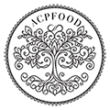
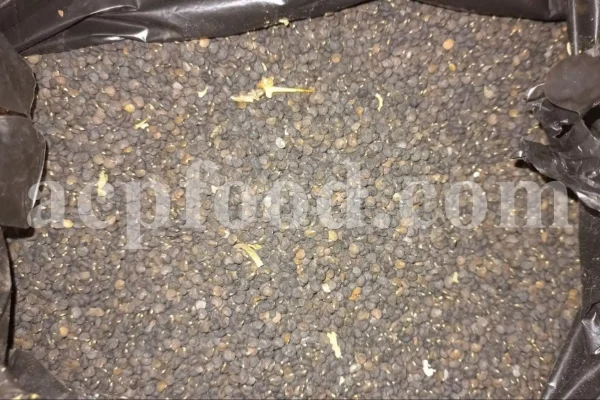
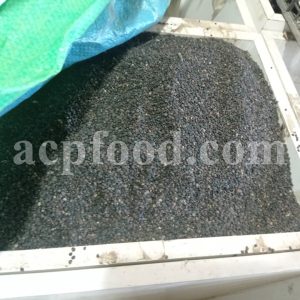
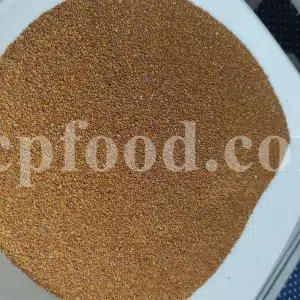
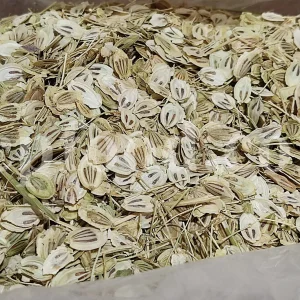

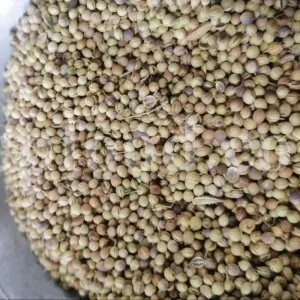
Reviews
There are no reviews yet.